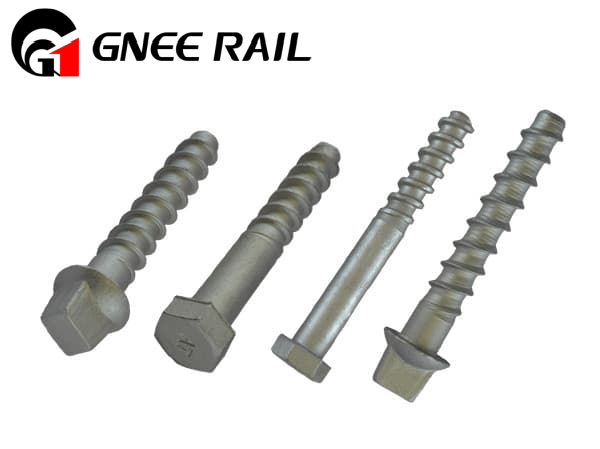
A rail screw spike, also called a sleeper screw, rail screw, or lag bolt, is a robust metal screw used to fasten a rail base plate or rail to a tie sleeper. These spikes are inserted into holes drilled into the tie sleeper, sometimes with embedded plastic dowels. They are commonly used for rails with wooden sleepers, particularly in America and Canada. The production process of railway screw spikes includes the following stages.
Raw Material
The process starts by selecting high-quality raw materials, typically steel, to ensure strength and durability.
Wire Drawing
Raw materials undergo wire drawing to shape them into the required dimensions for the screw spikes.
Rod Cutting
The drawn wire is then cut into individual rods of specific lengths, forming the basis for the screw spikes.
Head Forming
The head of the screw spike is formed through a shaping process, creating the part that will be driven into the rail or base plate.
Edge Cutting
The edges of the screw spike are cut and refined to achieve the desired shape and dimensions.
Thread Rolling
Threads are rolled onto the screw spike to enable it to be securely fastened into the tie sleeper.
Heat Treatment
The screw spikes undergo a heating treatment to enhance their hardness, strength, and overall mechanical properties.
Surface Finish
The screw spikes receive surface finishing treatments to protect against corrosion and improve their appearance.
Inspection
Rigorous inspection processes are carried out to ensure that each screw spike meets the required quality standards.
Packing
The finished screw spikes are appropriately packed for storage and transportation.
This production process ensures the manufacture of high-quality rail screw spikes, crucial for securely fastening rail components to tie sleepers in railway track systems.